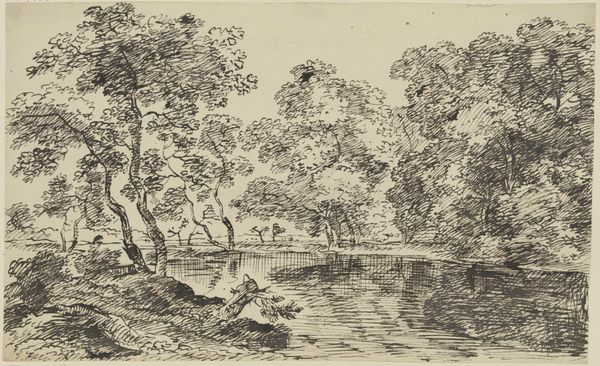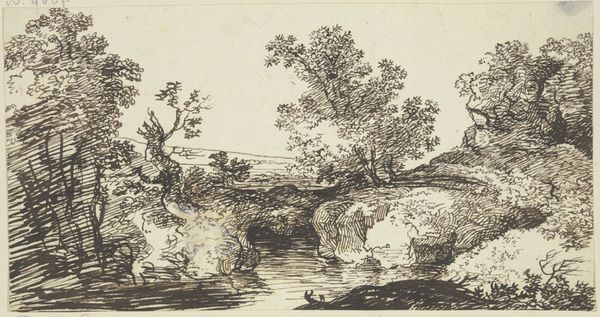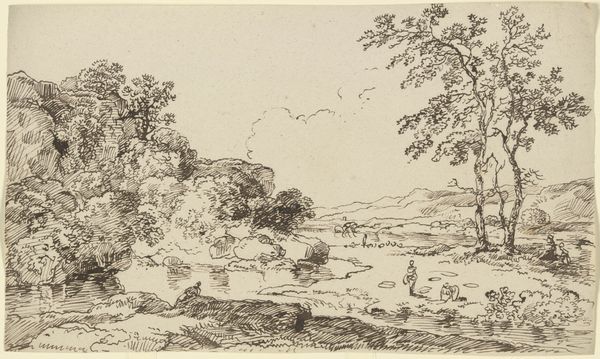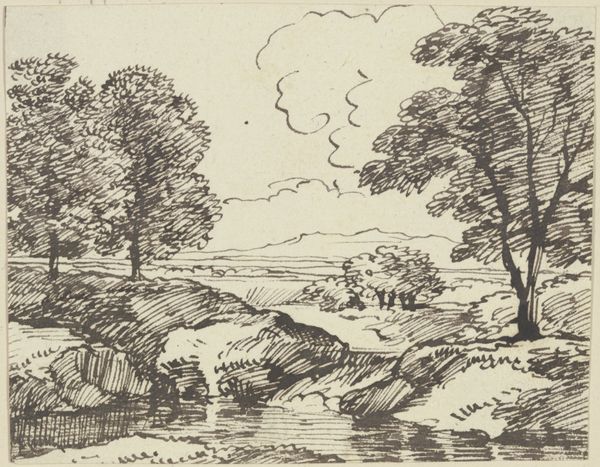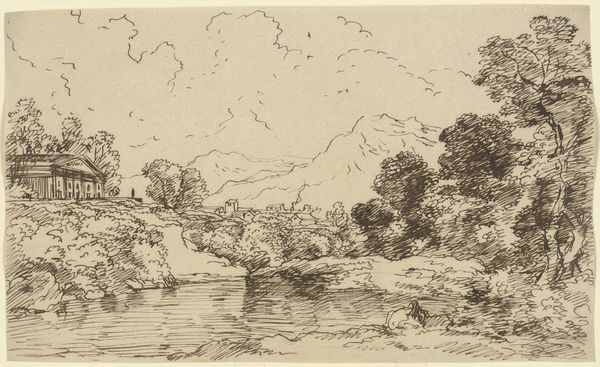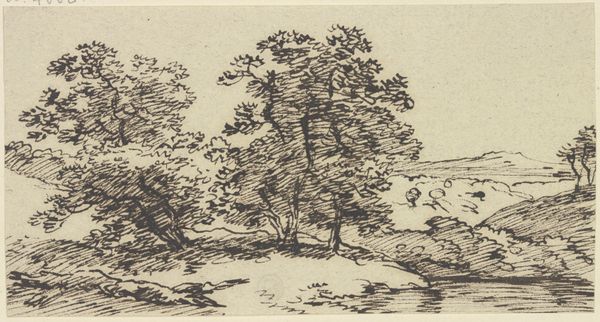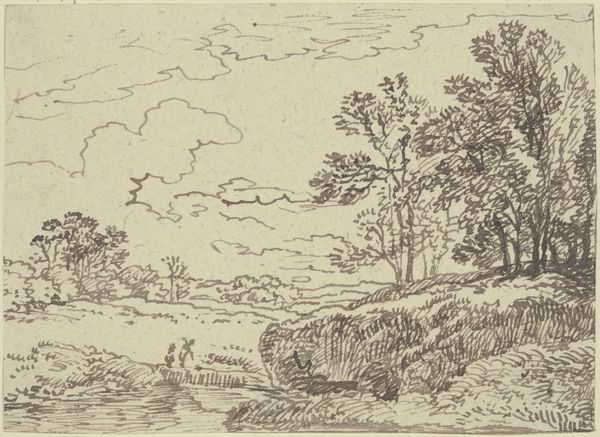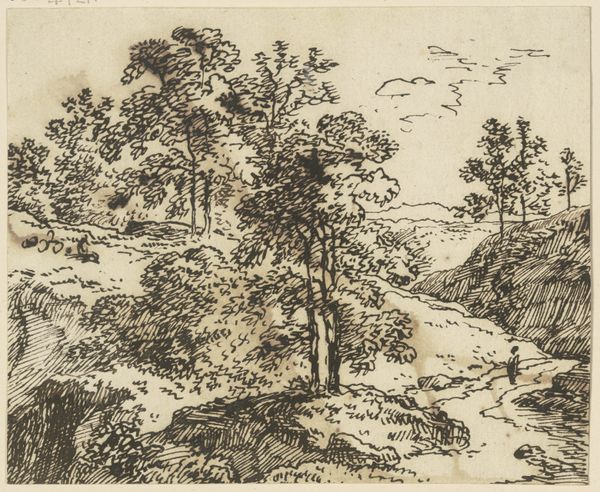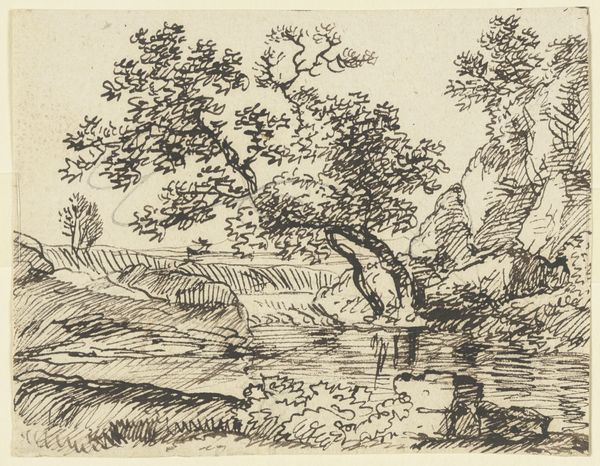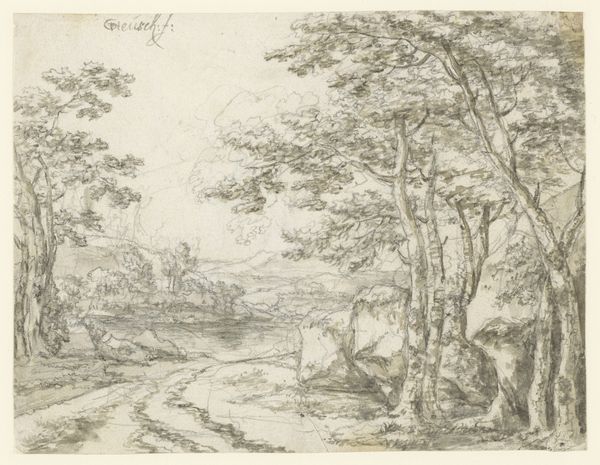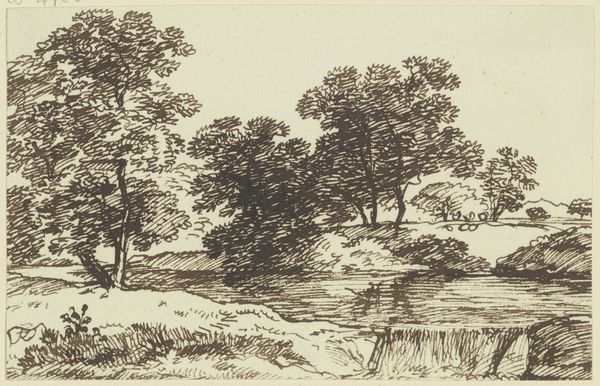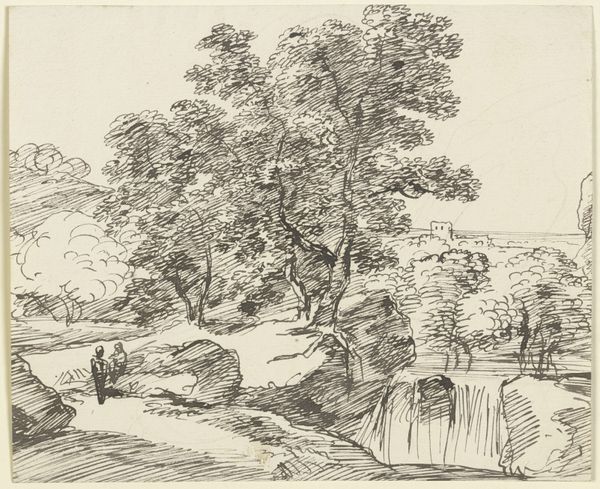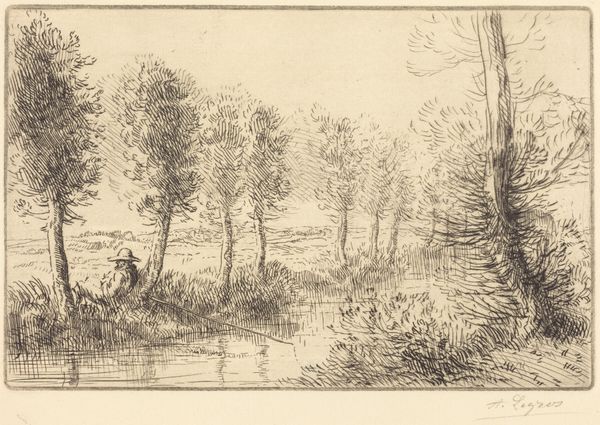
drawing, ink, indian-ink, pencil, graphite
#
landscape illustration sketch
#
drawing
#
pen drawing
#
pen illustration
#
pen sketch
#
landscape
#
personal sketchbook
#
ink
#
german
#
indian-ink
#
pen-ink sketch
#
pencil
#
15_18th-century
#
pen work
#
graphite
#
sketchbook drawing
#
sketchbook art
#
initial sketch
Copyright: Public Domain
Curator: I'm struck immediately by the intimacy of this little drawing—a whisper of a landscape, if you will. It feels so immediate. Editor: Indeed. What we have here is "Landschaft mit Gewässer und Bäumen"—Landscape with Water and Trees—likely crafted by the German artist Franz Kobell, sometime in the 18th century. It is rendered with pencil, graphite, and pen and ink. Curator: Pen and ink, yes. The immediacy comes, I think, from how spare the artist is in mark-making. The quick hatching to define the volume of those trees – you get the sense he’s recording a fleeting impression. There’s even an energy that feels a little frenetic! Editor: Absolutely. Note how the composition pivots around the central cluster of trees, directing our gaze into the receding landscape. The contrast of light and shadow isn’t just descriptive; it structures our reading of the space itself, from foreground to background, a semiotic act as much as an aesthetic one. Curator: I find myself imagining the moment of creation. Was he just sitting by the water’s edge, sketchbook in lap, jotting this down, drinking in the view? Did he sit, or stand? Was it chilly? Or summery, with gnats and a symphony of buzzing insects, and the warm earth and the aroma of trees all mushed together? You can almost *smell* it in this piece. Editor: Undoubtedly, that subjective response is a crucial part of the experience. However, it's equally compelling to analyze how Kobell deploys line, texture, and form. The drawing invites a formal reading just as readily. See the skillful use of hatching and stippling. A means to an end to suggest volume, to conjure form from the void. It’s elegantly efficient. Curator: In essence, he invites us to be still for a brief moment, too, doesn't he? To pause, to observe nature’s unassuming elegance, its delicate details. I appreciate his simple way of achieving so much. Editor: A very keen assessment. Kobell provides, I believe, a lucid reminder of the intrinsic connections linking the artistic process, perception, and nature’s silent architecture.
Comments
No comments
Be the first to comment and join the conversation on the ultimate creative platform.

